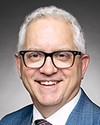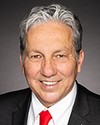We all know it's a universal principle that the key to a better life is a better education. Unfortunately, for indigenous nations and peoples, because of the effects of colonization and the government policy of beating the Indian out of the person, there have been horrendous effects that have affected education attainment.
As Minister of Northern Affairs, I know our government is committed. First, we've invested tens of millions of dollars through budgets in the past few years. There's been $13 million over five years for the Dechinta Centre for Research and Learning and $26 million over five years for a new science building at the Yukon University.
As important as that, about a year ago, we launched an independent task force on improving post-secondary education in the north, which was part of budget 2019. We have representations from all territories in the north, including the Arctic, northern Manitoba and, I believe, northern Ontario. Their goal and their mandate is to do consultations, talk to the public service, talk to the educators and really give our government some recommendations on what we need to do to improve post-secondary education outcomes in the north. However, it's hard to separate post-secondary from elementary education, because if you don't have a good base, then you're not going to have a good post-secondary system, so it's all connected. In order to have a good base, you need to make sure society is delivering good social determinants of health.
One thing that's apparent is the use of technology. If this pandemic has taught us anything, it is that we need to connect the country. We have a very ambitious universal broadband fund. We want to get 100% of Canada connected by 2030, I believe. That connectivity is so important for education, but also for health, for long-distance health care, which could be very valuable, and for commerce and business. That's something that we're depending on now.
You asked about the aboriginal youth strategy in Winnipeg. That was quite a few years ago. The main idea was that the city of Winnipeg's workforce was aging. We had an aging workforce on this side, and on the other side we had young indigenous people, the fastest-growing population in the city of Winnipeg. We needed to connect the two through mentorships, training programs and co-operative working arrangements, including education systems. I'm a bit out of the loop now as to where that is, but at the time, it was something that landed positively. It's something that our country needs to be doing.






